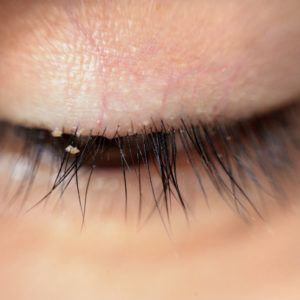Article
Beating the mighty Demodex mites
Author(s):
Demodex blepharitis is a virtual epidemic in the US; an estimated 20 million people have blepharitis, and of that population, almost half have Demodex. A new therapeutic is the sole treatment option that targets the disease.

Reviewed by Jennifer Loh, MD
Demodex blepharitis is a virtual epidemic in the US; an estimated 20 million people have blepharitis, and of that population, almost half have Demodex.
Until recently, there was no treatment that specifically targeted the Demodex; lotilaner ophthalmic solution, 0.25% (TP-03; Tarsus Pharmaceuticals, Inc), an eye drop, will fill that gap, according to Jennifer Loh, MD.
“The patients with blepharitis represent a large, underserved market in eye care,” said Loh, who is in private practice in the Miami, Florida, area.
Jennifer Loh, MD

Left untreated, ocular redness, irritation, and blurred vision can result; blepharitis also negatively affects contact lens wearers, dry eye patients, and those undergoing cataract surgery.
Currently, no FDA-approved prescription treatment is available for these patients, 81% of whom are seeking treatment.
Ferreting out the mites
The pathognomonic sign of Demodex is the presence of collarettes, which are deposits on the lids that are comprised of mite waste and eggs. This differs from the appearance of classic blepharitis in that the collarettes appear as a translucent waxy cylinder surrounding the eyelash.
Loh described this material as regurgitated, undigested material combined with epithelial cells, keratin, mite eggs, and digestive enzymes, all of which cause lid irritation. Typically, the collarettes are seen at the base of the lashes; 100% of patients with collarettes had Demodex mites in a recent study, she explained.
Once these collarettes are spotted, the diagnosis can be established with confidence, Loh said.
An easy way to identify these wily creatures, she advised, is to instruct the patients to look down during the slit-lamp examination. This simple move can reveal the diffuse collarettes and misdirected or missing eyelashes.
No FDA-approved treatment is available to kill mites. Current treatments that are available for Demodex blepharitis help reduce the bacterial load to achieve symptom relief. These include tea tree oil and hypochlorous acid for the blepharitis, with the goal of reducing the food supply for the mites.
Lotilaner ophthalmic solution, 0.25%
This formulation is a novel therapy designed to eradicate Demodex mites and treat the blepharitis. TP-03 works by paralyzing and killing the mites. Patients are instructed to instill the drops twice daily for 6 weeks.
Two pivotal studies of TP-03, the Saturn-1 and Saturn-2 trials, are ongoing. The studies primary and secondary end points are collarette cure, mite eradication, and decreased redness. The studies include, respectively, 421 and 418 patients.
Results from the Saturn-1 study found that lotilaner ophthalmic solution, 0.25%, if approved, may be a safe and effective treatment for Demodex blepharitis.
Specifically, the study showed that the ophthalmic solution met all the end points with high statistical significance. Lotilaner ophthalmic solution, 0.25% resulted in reduction of the collarettes and mite density, as well as erythema cure and improvements. The effects were seen within 2 weeks of the initiation of treatment. Clinically meaningful cures were seen in 81% of the study patients; 96% of patients had fewer than 0.5 mites per lash, and 93% of patients improved by at least 1 collarette grade.
The drug was well tolerated and had a good safety profile; 92% of patients rated it as neutral to very comfortable, Loh reported.
Jennifer Loh, MD
E: jenniferlohmd@gmail.com
This article is adapted from Loh’s presentation at the Real World Ophthalmology meeting. She is a consultant to Tarsus Pharmaceuticals Inc and NovaBay Pharmaceuticals Inc.
Newsletter
Don’t miss out—get Ophthalmology Times updates on the latest clinical advancements and expert interviews, straight to your inbox.





